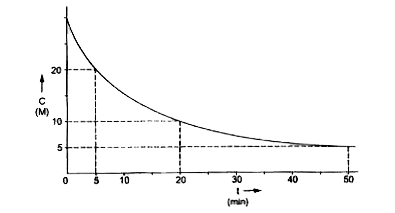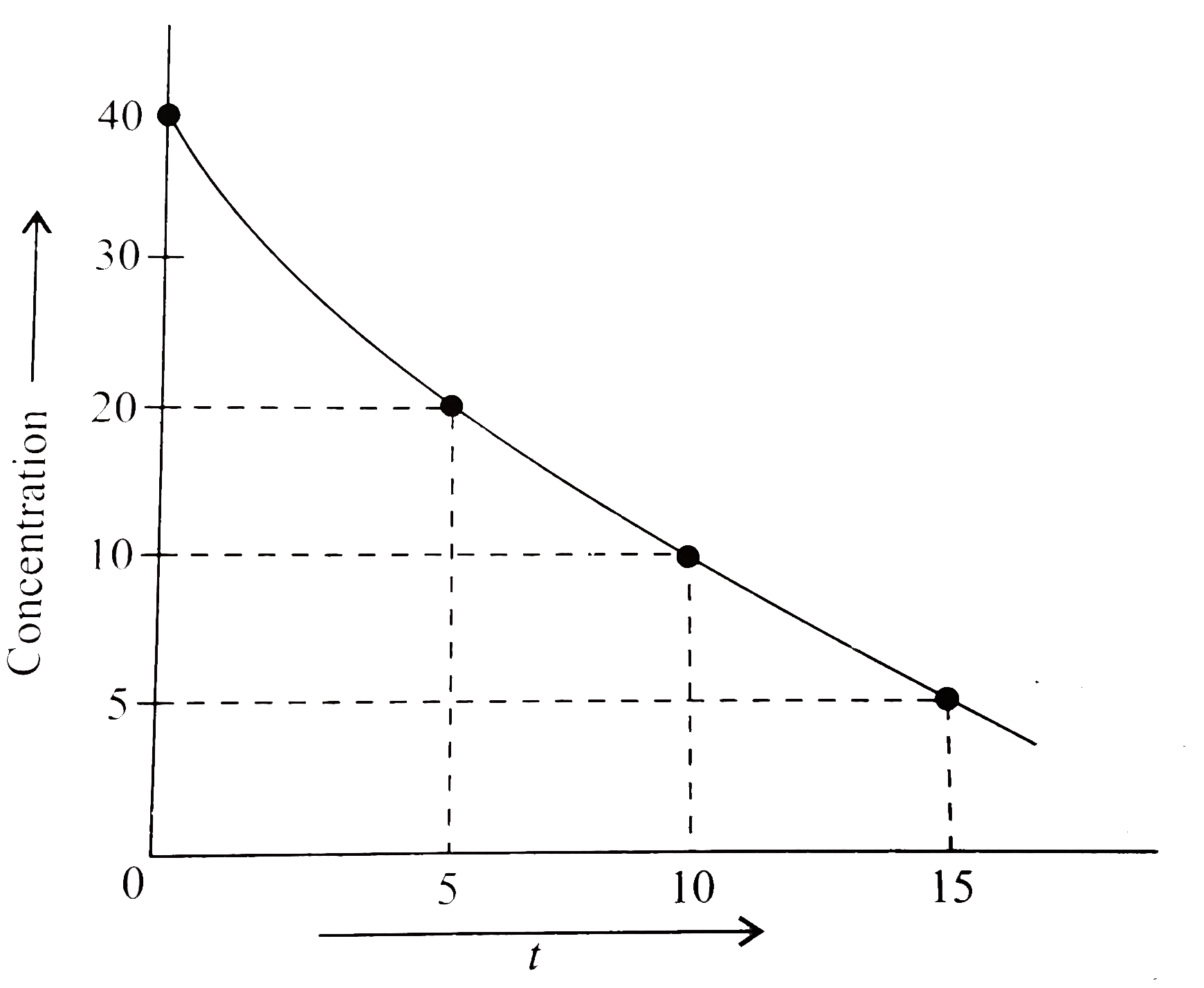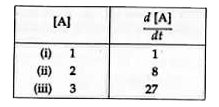EXAMPLES from BHARATI BHAWAN CHEMISTRY (HINGLISH) CHEMICAL KINETICS for Class 12
| Class 12 | CHEMISTRY |
| Chapter | CHEMICAL KINETICS |
| BHARATI BHAWAN CHEMISTRY (HINGLISH) | EXAMPLES |
| Medium | English |
| Academic Year | 2023-2024 |
Question 16
For a reaction at 800∘C
2NO+2H2→N2+2H2O, the following data were obtained:
∣∣ ∣ ∣ ∣ ∣ ∣∣[NO]×10−4(M)[H2]×10−3(M)−12d[NO]dt×10−4(molL−1−1min)i.1.54.0 4.4ii.1.52.0 2.2iii.0.52.0 0.24∣∣ ∣ ∣ ∣ ∣ ∣∣
What is the order of this reaction with respect to NO and H2 ? Also calculate the rate constant.View SolutionQuestion 21
In the decomposition of H2O2 at 300 K , the energy of activation was found to be 18 kcal/mole , while it decreased to 6 kcal/mole when the decomposition was carried out in the presence of a catalyst at 300 K . How many times is the catalysed reaction faster than the uncatalysed one ? View SolutionQuestion 29
1 mL of methyl acetate was added to 20 mL of 0.5 N HCl and 2 mL of the mixture was withdrawn from time to time during the process of hydorlysis of the ester and titrated with a solution of alkali . The amount of alkali needed for titration at various intervious intervals is given below :
Time020119∞(min)Alkali used19.2420.7326.642.03(mL)
Establish that the reaction is of first order . View SolutionQuestion 35
The decomposition of N2O5 according to the equation
2N2O5(g)→4NO2(g)+O2(g)
is a first - order reaction . After 30 minutes from the start of the decomposition in a closed vessel , the total pressure developed is found to be 284.5 mmHg and an complete decomposition the total pressure is 584.5 mmHg . Calculate the rate constant of the reaction . View SolutionQuestion 38
Bicyclohexane was found to undergo two parallel first order rearrangements . At 730 K , the first order rearrangemen730 K , the first order rate constant for the formation of cyclohexane was measure as 1.26×10−1s−1 and for the formation of unethyl cyclopentene the rate constant was 3.8×10−5s−1 . What is the percentage distribution of the rearrangement products ? View SolutionQuestion 41
The complexation of Fe2+ with the chelating agent dipyridyl has been studied kinetically in both forward and reverse directions .
Fe2++3dipy→Fe(dipy)2+3
Rate (forward) = (1.45×1013)[Fe2+][dipy]3
and rate (reverse) = (1.22×10−4)[Fe(dipy)2+3]
Find the stability constant for the complex . View SolutionQuestion 42
The approach to the following equilibrium was observed kinetically from both directions PtCl2−4+H2O⇔Pt(H2O)Cl−3+Cl−at 25∘C. It was found that −d[PtCl2−4]dt=(3.9×10−5)[PtCl2−4]−(2.1×10−3)[Pt(H2O)Cl−3][Cl−]
Calculate the equilibrium constant for the complexation of the fourth Cl− by Pt(II) . View SolutionQuestion 47
Some PH3(g) is introduced into a flask at 600∘C containing an inert gas . PH3 proceed to decompose into P4(g)andH2(g) and the reaction goes to completion . The total pressure is given below as a function of time . Find the order of the reaction and calculate the rate constant for the reaction :
4PH3→P4+6H2
 View Solution
View SolutionQuestion 48
The vapour pressure to two miscible liquids (A) and (B) are 300 and 500 mm of Hg respectively. In a flask 10 mole of (A) is mixed with 12 mole of (B). However, as soon as (B) is added, (A) starts polymerising into a completely insoluble solid. The polymerisation follows first-order kinetics. After 100 minutes, 0.525 mole of a solute is dissolved which arrests the polymerisation completely. The final vapour pressure of the solution is 400 mm of Hg. Estimate the rate constant of the polymerisation reaction. Assume negligible volume change on mixing and polymerisation and ideal behaviour for the final solution.View Solution



 .
.

 .
.